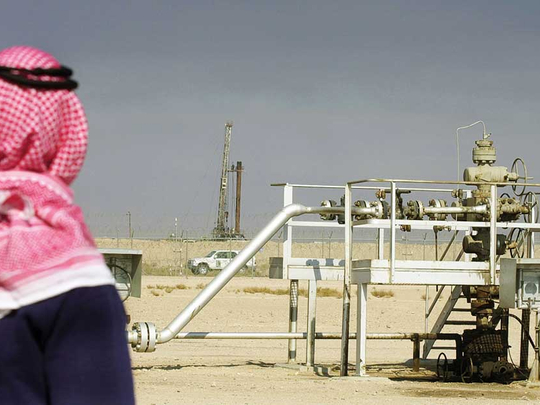
London: Oil rose to a four-week high after an industry report signalled a bigger-than-forecast drop in US crude stockpiles, adding impetus to a rally driven by a tense standoff between Washington and Tehran.
Futures in New York gained as much as 2.3 per cent. The American Petroleum Institute reported that inventories fell by 7.55 million barrels last week, according to people familiar with the data. That would be the biggest decline in more than three months if confirmed by government figures. Gasoline futures jumped in New York after Reuters reported that Philadelphia Energy Solutions is expected to close its refinery, the largest on the US East Coast.
Oil has rallied around 15 per cent since the middle of the month as escalating tensions in the Middle East have taken over from the US-China trade war as the main price driver. A meeting between the presidents of the two countries at the G-20 summit in Japan this weekend is generating some optimism that trade talks may resume. Meanwhile, the Organisation of Petroleum Exporting Countries and its allies will decide output levels for the rest of 2019 at a meeting next week.
“This is the market’s reaction to the unexpectedly pronounced fall in US crude-oil stocks,” said Carsten Fritsch, an analyst at Commerzbank AG in Frankfurt. “Apart from crude-oil stock trends, the focus here is also likely to be on gasoline demand” as the northern hemisphere moves into the peak summer driving season.
West Texas Intermediate for August delivery rose $1, or 1.7 per cent, to $58.83 a barrel on the New York Mercantile Exchange at 11:18am. London time. It climbed to $59.13 earlier, the highest intraday level since May 30. The contract rose 7.7 per cent in the three sessions through Monday.
Brent for August settlement advanced 81 cents, or 1.3 per cent, to $65.86 a barrel on London’s ICE Futures Europe Exchange. The global benchmark crude traded at a premium of $7.02 to WTI. The gap was as low as $6.86 earlier, the least since early April.
The API figures for American stockpiles compare with the median estimate in a Bloomberg survey for a 2.87 million-barrel decline. Inventories fell by 3.1 million barrels in the week to June 14, according to Energy Administration data. The US summer driving season typically boosts oil demand and has helped narrow the Brent-WTI spread.
Russian President Vladimir Putin will probably discuss oil-output reductions with Saudi Crown Prince Mohammad Bin Salman on the sidelines of the G-20 summit, potentially providing a breakthrough on Opec+ policy before ministers convene in Vienna. While Saudi Arabia has pushed for an extension of the cuts, Russia — OPEC’s most important ally — has adopted a wait-and-see approach.
The US is said to be willing to suspend the next round of tariffs on an additional $300 billion of Chinese imports while Beijing and Washington prepare to resume trade negotiations, people familiar with the plan said. However, no detailed trade deal is expected at the G-20 summit, according to a senior Trump administration official.












